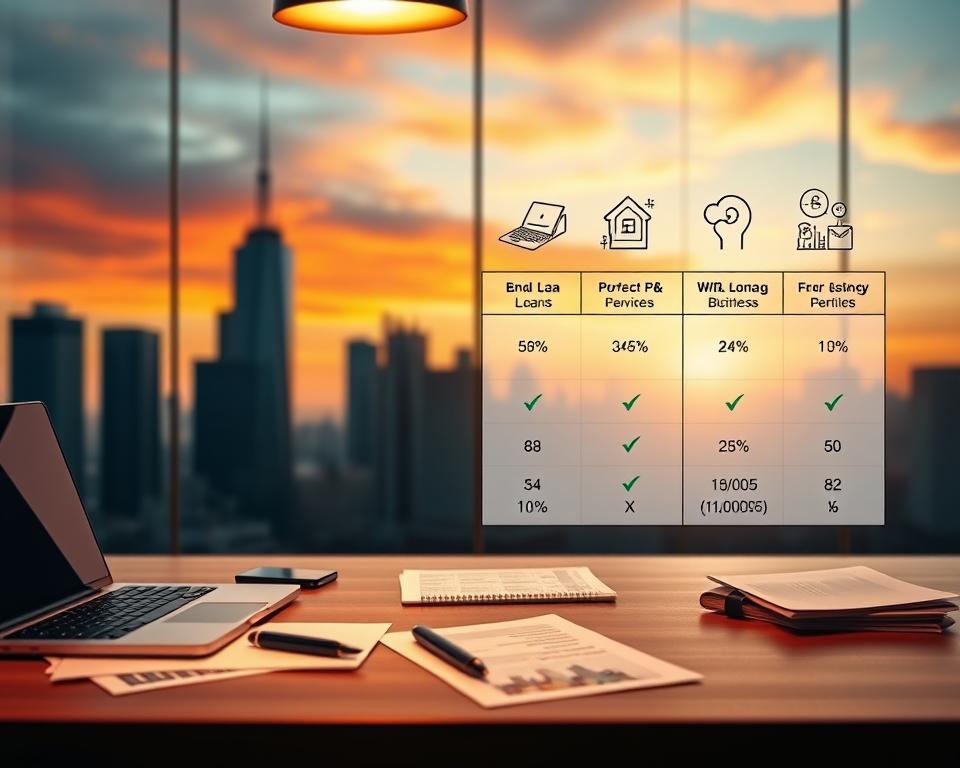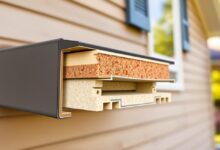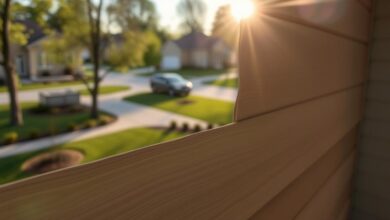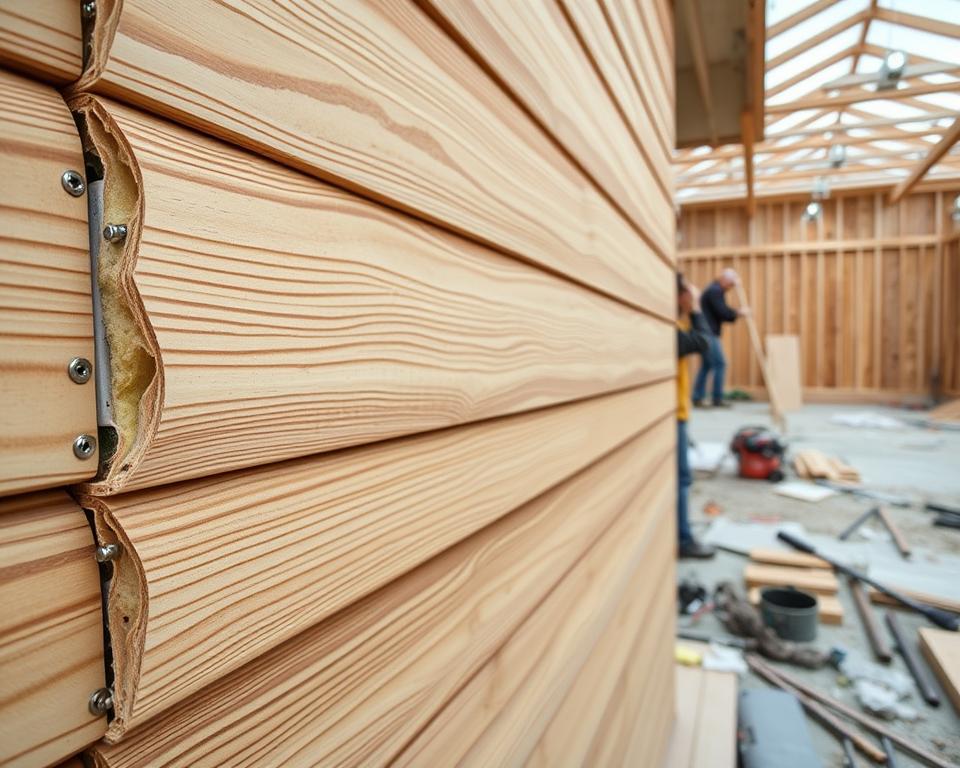Insulated Siding: Unlock the Benefits for Your Home
Looking to make your home more energy-efficient and attractive? Insulated siding is a key upgrade in home improvement. It brings many advantages that can change your home for the better.
Choosing the right insulated siding can make your home more comfortable and cost-effective. It’s also better for the environment. This smart choice not only improves your home’s look but also cuts down on energy use.
In the world of home improvement, it’s key to know how energy efficiency can be boosted. Insulated siding is a simple yet powerful way to achieve this.
Key Takeaways
- Enhance your home’s energy efficiency
- Improve your home’s exterior appeal
- Reduce energy consumption and costs
- Create a more comfortable living space
- Contribute to a more environmentally friendly home
What Is Insulated Siding?
Insulated siding is a new way to cover your home’s exterior. It’s strong and saves energy. It’s perfect for those who want to improve their home’s look and cut down on energy costs.
The Structure and Components
Insulated siding has several parts. It has a tough outer layer, insulation in the middle, and a backing. The insulation is what makes it save energy by keeping the inside warm or cool.
How It Differs from Traditional Siding Options
Insulated siding is different from regular siding. It’s better at keeping energy in and noise out. This makes it a great choice for siding installation. It makes your home quieter and saves you money on energy bills.
The Benefits of Insulated Siding
Insulated siding brings many advantages for homeowners. It adds a layer of insulation, making your home more comfortable and energy-efficient.
Energy Efficiency Improvements
Insulated siding is great for saving energy. It keeps your home warm in winter and cool in summer. This means lower energy bills for you.
Noise Reduction Properties
It also reduces noise, perfect for homes in loud areas. The insulation absorbs sound, making your home quieter. This is great for homes near highways or in cities.
Enhanced Durability and Weather Resistance
Insulated siding is built to last and withstand harsh weather. It can handle extreme temperatures and heavy rain. Your home stays safe and secure.
Aesthetic Improvements and Curb Appeal
Lastly, it makes your home look better. You can choose from many styles and colors to match your home. This boosts your home’s appeal, making it more attractive to buyers if you sell.
How to Assess Your Home’s Siding Needs
Understanding your home’s siding needs is key for a successful insulated siding project. Start by checking your current siding’s condition. This helps you find areas that need improvement.
Evaluating Your Current Siding Condition
First, look at your home’s exterior for signs of wear. Check for cracks, fading, or damage. Also, check for gaps or openings around windows, doors, and vents. These can cause energy loss.
Make a list of areas that need repair or replacement.
Identifying Energy Loss Areas
To find energy loss areas, visually inspect your home’s exterior. Look for gaps or cracks in siding, windows, and doors. You can also use a DIY energy audit with a candle or incense stick to find air leaks.
Measuring and Calculating Materials Needed
To figure out materials needed, measure each wall’s height and width. Subtract the area of windows and doors. Use these numbers to find the total square footage needed.
Consider getting help from a professional to make sure you have enough material for a smooth installation.
By following these steps, you can assess your home’s siding needs well. This prepares you for a successful insulated siding installation.
How to Choose the Right Insulated Siding
Choosing the right insulated siding means looking at R-values, materials, and styles. This helps make your home energy-efficient and good-looking.
Understanding R-Values for Your Climate Zone
The R-value shows how well siding keeps heat out. In cold places, you need a high R-value to stay warm. In hot places, reflective siding helps keep it cool.
In the north, an R-value of at least 3 is good. In the south, siding that reflects sunlight and heat is better.
Comparing Material Options (Vinyl, Fiber Cement, Steel)
Insulated siding comes in vinyl, fiber cement, and steel. Vinyl is affordable and easy to care for. Fiber cement is strong and looks like wood. Steel is very strong and looks modern.
- Vinyl siding is a popular choice due to its affordability and low maintenance.
- Fiber cement siding is known for its durability and can mimic the appearance of wood.
- Steel siding is highly durable and can be coated for additional protection against the elements.
Selecting Colors and Styles That Complement Your Home
The color and style of your siding matter a lot. Pick colors that match your home and the area around it.
Think about your neighborhood’s look and what you like when picking siding colors and styles.
Budget Considerations and Quality Factors
Money is important, but don’t forget about quality. Cheap siding might save money at first but could cost more to fix later.
Good insulated siding will make your home worth more and save on energy bills over time.
Step-by-Step Installation Guide
Installing insulated siding on your home is easier with the right tools and knowledge. This guide will help you do it well, so your home looks great.
Tools and Materials Checklist
Before you start, make sure you have everything you need. Here’s a list to help you get ready:
- Insulated siding panels
- Utility knife or siding cutter
- Hammer or mallet
- Nails or siding fasteners
- Measuring tape
- Level
- Pencil and chalk line
- Safety glasses and gloves
Preparation Steps for Your Home’s Exterior
Getting your home ready is the first step. Clear the area of debris and obstructions. Move outdoor furniture and plants away. Cover the ground with a drop cloth to protect it.
Check your exterior walls for damage or rot. Fix any problems before you start installing.
Installation Techniques and Best Practices
Start by putting up the starter strip at the bottom of your wall. Make sure it’s level and secure. Then, install the siding panels from the bottom up, following the manufacturer’s instructions.
Use a level to keep the panels straight, and fasten them as recommended. Leave a gap for expansion and contraction.
Common Installation Mistakes to Avoid
One big mistake is not aligning the siding panels right. Make sure they fit well and the edges are straight.
- Not leaving enough gap for expansion
- Using the wrong type of fasteners
- Not checking for level and plumb during installation
Safety Precautions During Installation
Always put safety first when installing siding. Wear safety glasses and gloves to protect yourself from debris and sharp edges.
“Safety is not just a precaution, it’s a practice that saves lives.” Always be careful and aware of your surroundings during installation.
By following these steps and being careful, you can install insulated siding well. It will make your home more energy-efficient and look better.
How to Maintain Your Insulated Siding
Keeping your insulated siding in top shape is key. Regular care boosts its life and keeps it looking good and saving energy.
Seasonal Cleaning Procedures
Seasonal cleaning is a must to keep your siding safe from dirt and damage. Use a mild soap and a soft brush for cleaning. Stay away from high-pressure washes, as they can harm the siding.
- Spring: Inspect for winter damage and clean off any debris.
- Summer: Check for dirt and grime buildup.
- Fall: Clean leaves and prepare for winter.
- Winter: Avoid using harsh chemicals that could be damaged by freezing temperatures.
Inspection and Damage Prevention Tips
Regular checks can spot problems early. Look for cracks, dents, or gaps in the siding. Fixing these issues quickly keeps your siding strong.
Key areas to inspect include:
- Edges and corners
- Areas around windows and doors
- Sections exposed to heavy weather conditions
Long-term Maintenance Schedule
Having a long-term plan for upkeep keeps your siding in great shape. This includes regular cleaning, inspections, and fixing any damage. A well-cared-for siding can last for decades, saving energy and looking good.
Calculating Return on Investment
Figuring out the ROI for insulated siding means looking at energy savings and property value boosts. Homeowners need to think about both short-term and long-term gains.
Tracking Energy Savings After Installation
Insulated siding cuts down on energy use. It minimizes heat transfer between inside and outside, keeping the temperature steady. This means less need for heating and cooling. Homeowners can see their energy savings by comparing old and new utility bills.
Property Value Improvements
Insulated siding also boosts a home’s look and value. Studies show that energy-saving upgrades like insulated siding can increase a home’s value. This makes it more appealing to buyers. Here’s a table showing how insulated siding can raise property value.
| Location | Average Increase in Property Value |
|---|---|
| Northeast | 4.5% |
| South | 3.8% |
| West Coast | 5.2% |
Tax Incentives and Rebates for Energy Efficiency
Many governments give tax incentives and rebates for energy-saving upgrades like insulated siding. These can lower the upfront cost, making the investment more worthwhile. Homeowners should look into local programs for more information.
Understanding what affects the ROI of insulated siding helps homeowners make smart choices. With energy savings, property value increases, and tax breaks, insulated siding is a solid investment.
Conclusion: Making the Smart Choice with Insulated Siding
Insulated siding brings many benefits to homeowners. It improves energy efficiency, durability, and looks. Knowing how it works helps homeowners make smart choices for their homes.
Insulated siding also reduces noise and keeps weather out. It’s a great choice for those wanting a better living space. Homeowners can pick from materials like vinyl, fiber cement, and steel, based on their needs and budget.
Installing insulated siding cuts down energy use and boosts property value. It may even get tax breaks and rebates. So, insulated siding is a wise choice for those wanting a more comfortable, efficient, and valuable home.








